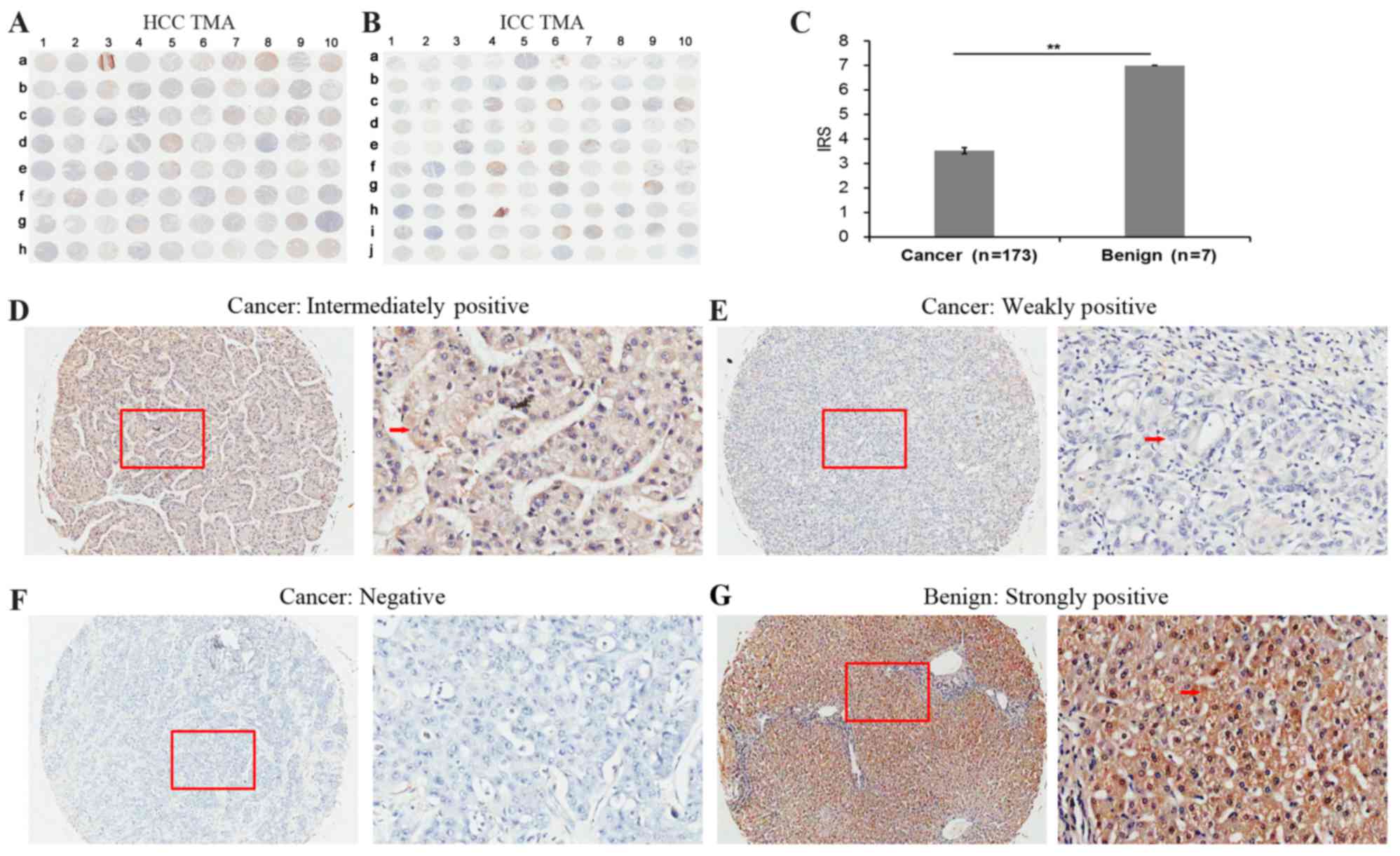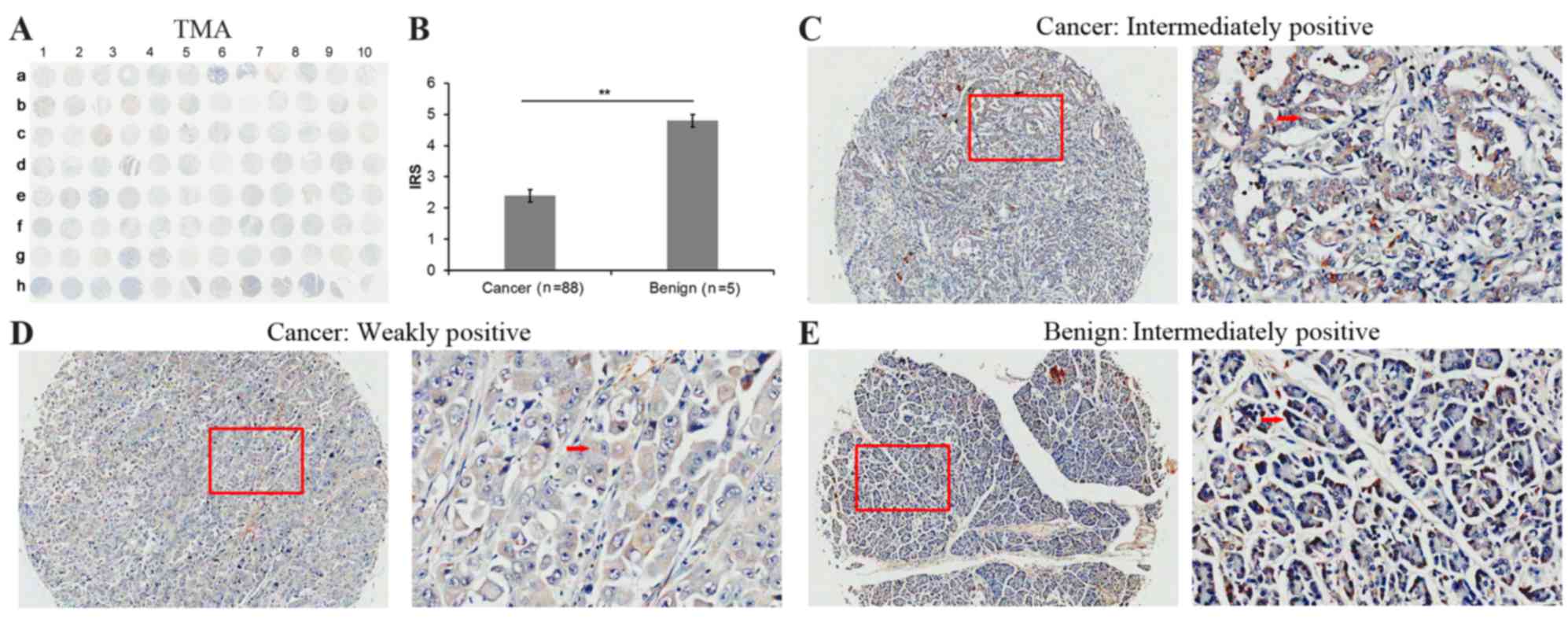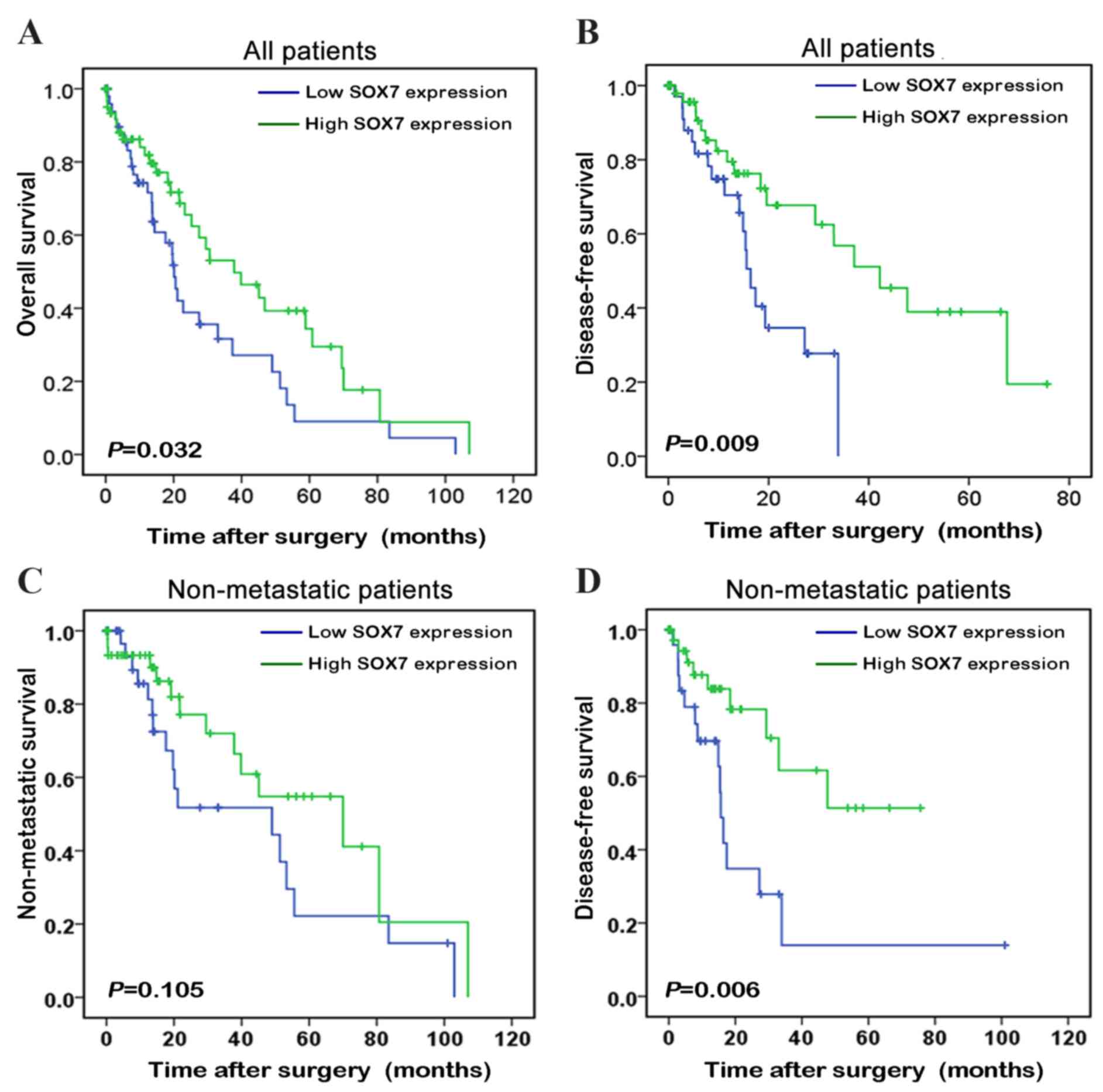|
1
|
McGlynn KA, Tsao L, Hsing AW, Devesa SS
and Fraumeni JF Jr: International trends and patterns of primary
liver cancer. Int J Cancer. 94:290–296. 2001. View Article : Google Scholar : PubMed/NCBI
|
|
2
|
Mittal S and El-Serag HB: Epidemiology of
hepatocellular carcinoma: Consider the population. J Clin
Gastroenterol. 47:(Suppl). S2–S6. 2013. View Article : Google Scholar : PubMed/NCBI
|
|
3
|
Wolfgang CL, Herman JM, Laheru DA, Klein
AP, Erdek MA, Fishman EK and Hruban RH: Recent progress in
pancreatic cancer. CA Cancer J Clin. 63:318–348. 2013. View Article : Google Scholar : PubMed/NCBI
|
|
4
|
Bosman FT, Carneiro F, Hruban RH and
Theise ND: WHO classification of tumours of the digestive system.
Geneva: World Health Organization; 2010
|
|
5
|
Jemal A, Bray F, Center MM, Ferlay J, Ward
E and Forman D: Global cancer statistics. CA Cancer J Clin.
61:69–90. 2011. View Article : Google Scholar : PubMed/NCBI
|
|
6
|
Wegner M: From head to toes: The multiple
facets of Sox proteins. Nucleic Acids Res. 27:1409–1420. 1999.
View Article : Google Scholar : PubMed/NCBI
|
|
7
|
Stovall DB, Cao P and Sui G: SOX7: From a
developmental regulator to an emerging tumor suppressor. Histol
Histopathol. 29:439–445. 2014.PubMed/NCBI
|
|
8
|
Gandillet A, Serrano AG, Pearson S,
Lie-A-Ling M, Lacaud G and Kouskoff V: Sox7-sustained expression
alters the balance between proliferation and differentiation of
hematopoietic progenitors at the onset of blood specification.
Blood. 114:4813–4822. 2009. View Article : Google Scholar : PubMed/NCBI
|
|
9
|
Nelson TJ, Chiriac A, Faustino RS,
Crespo-Diaz RJ, Behfar A and Terzic A: Lineage specification of
Flk-1+ progenitors is associated with divergent Sox7 expression in
cardiopoiesis. Differentiation. 77:248–255. 2009. View Article : Google Scholar : PubMed/NCBI
|
|
10
|
Cermenati S, Moleri S, Cimbro S, Corti P,
Del Giacco L, Amodeo R, Dejana E, Koopman P, Cotelli F and Beltrame
M: Sox18 and Sox7 play redundant roles in vascular development.
Blood. 111:2657–2666. 2008. View Article : Google Scholar : PubMed/NCBI
|
|
11
|
Séguin CA, Draper JS, Nagy A and Rossant
J: Establishment of endoderm progenitors by SOX transcription
factor expression in human embryonic stem cells. Cell Stem Cell.
3:182–195. 2008. View Article : Google Scholar : PubMed/NCBI
|
|
12
|
Savage J, Conley AJ, Blais A and Skerjanc
IS: SOX15 and SOX7 differentially regulate the myogenic program in
P19 cells. Stem Cells. 27:1231–1243. 2009. View Article : Google Scholar : PubMed/NCBI
|
|
13
|
Wang C, Guo Y, Wang J and Min Z: The
suppressive role of SOX7 in hepatocarcinogenesis. PLoS One.
9:e974332014. View Article : Google Scholar : PubMed/NCBI
|
|
14
|
Zhang Y, Huang S, Dong W, Li L, Feng Y,
Pan L, Han Z, Wang X, Ren G, Su D, et al: SOX7, down-regulated in
colorectal cancer, induces apoptosis and inhibits proliferation of
colorectal cancer cells. Cancer Lett. 277:29–37. 2009. View Article : Google Scholar : PubMed/NCBI
|
|
15
|
Li B, Ge Z, Song S, Zhang S, Yan H, Huang
B and Zhang Y: Decreased expression of SOX7 is correlated with poor
prognosis in lung adenocarcinoma patients. Pathol Oncol Res.
18:1039–1045. 2012. View Article : Google Scholar : PubMed/NCBI
|
|
16
|
Chan DW, Mak CS, Leung TH, Chan KK and
Ngan HY: Down-regulation of sox7 is associated with aberrant
activation of wnt/b-catenin signaling in endometrial cancer.
Oncotarget. 3:1546–1556. 2012. View Article : Google Scholar : PubMed/NCBI
|
|
17
|
Katoh M: Expression of human SOX7 in
normal tissues and tumors. Int J Mol Med. 9:363–368.
2002.PubMed/NCBI
|
|
18
|
Stovall DB, Wan M, Miller LD, Cao P,
Maglic D, Zhang Q, Stampfer MR, Liu W, Xu J and Sui G: The
regulation of SOX7 and its tumor suppressive role in breast cancer.
Am J Pathol. 183:1645–1653. 2013. View Article : Google Scholar : PubMed/NCBI
|
|
19
|
Zhong WD, Qin GQ, Dai QS, Han ZD, Chen SM,
Ling XH, Fu X, Cai C, Chen JH, Chen XB, et al: SOXs in human
prostate cancer: Implication as progression and prognosis factors.
BMC Cancer. 12:2482012. View Article : Google Scholar : PubMed/NCBI
|
|
20
|
Qi J, Wang J, Katayama H, Sen S and Liu
SM: Circulating microRNAs (cmiRNAs) as novel potential biomarkers
for hepatocellular carcinoma. Neoplasma. 60:135–142. 2013.
View Article : Google Scholar : PubMed/NCBI
|
|
21
|
Zhang Y, Jiang H, Qin M, Su X, Cao Z and
Wang J: TNIK serves as a novel biomarker associated with poor
prognosis in patients with pancreatic cancer. Tumour Biol.
37:1035–1040. 2016. View Article : Google Scholar : PubMed/NCBI
|
|
22
|
Wong R and Frenette C: Updates in the
management of hepatocellular carcinoma. Gastroenterol Hepatol (N
Y). 7:16–24. 2011.PubMed/NCBI
|
|
23
|
Kormish JD, Sinner D and Zorn AM:
Interactions between SOX factors and Wnt/beta-catenin signaling in
development and disease. Dev Dyn. 239:56–68. 2010.PubMed/NCBI
|
|
24
|
Takash W, Cañizares J, Bonneaud N, Poulat
F, Mattéi MG, Jay P and Berta P: SOX7 transcription factor:
Sequence, chromosomal localisation, expression, transactivation and
interference with Wnt signalling. Nucleic Acids Res. 29:4274–4283.
2001. View Article : Google Scholar : PubMed/NCBI
|
|
25
|
Cui J, Xi H, Cai A, Bian S, Wei B and Chen
L: Decreased expression of Sox7 correlates with the upregulation of
the Wnt/β-catenin signaling pathway and the poor survival of
gastric cancer patients. Int J Mol Med. 34:197–204. 2014.PubMed/NCBI
|
|
26
|
Guo L, Zhong D, Lau S, Liu X, Dong XY, Sun
X, Yang VW, Vertino PM, Moreno CS, Varma V, et al: Sox7 is an
independent checkpoint for beta-catenin function in prostate and
colon epithelial cells. Mol Cancer Res. 6:1421–1430. 2008.
View Article : Google Scholar : PubMed/NCBI
|













